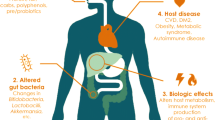Abstract
Patulin (PAT) is a natural contaminant of fruits (primarily apples) and their products. Significantly, high levels of contamination have been found in fruit juices all over the world. Several in vitro studies have demonstrated PAT’s ability to alter intestinal structure and function. However, in real life, the probability of low dose long-term exposure to PAT to humans is significantly higher through contaminated food items. Thus, in the present study, we have exposed normal intestinal cells to non-toxic levels of PAT for 16 weeks and observed that PAT had the ability to cause cancer-like properties in normal intestinal epithelial cells after chronic exposure. Here, our results showed that chronic exposure to low doses of PAT caused enhanced proliferation, migration and invasion ability, and the capability to grow in soft agar (anchorage independence). Moreover, an in vivo study showed the appearance of colonic aberrant crypt foci (ACFs) in PAT-exposed Wistar rats, which are well, establish markers for early colon cancer. Furthermore, as these neoplastic changes are consequences of alterations at the molecular level, here, we combined next-generation RNA sequencing with liquid chromatography mass spectrometry-based proteomic analysis to investigate the possible underlying mechanisms involved in PAT-induced neoplastic changes.




Similar content being viewed by others
References
Pal S, Singh N, Ansari KM (2017) Toxicological effects of patulin mycotoxin on the mammalian system: an overview. Toxicol Res 6:764–771. https://doi.org/10.1039/C7TX00138J
Saleh I, Goktepe I (2019) The characteristics, occurrence, and toxicological effects of patulin. Food Chem Toxicol 129:301–311. https://doi.org/10.1016/J.FCT.2019.04.036
Saxena N, Dwivedi PD, Ansari KM, Das M (2008) Patulin in apple juices: incidence and likely intake in an Indian population. Food Addit Contam B 1:140–146. https://doi.org/10.1080/02652030802378848
Singh N, Bansal M, Pal S et al (2018) COX-2/EP2-EP4/β-catenin signaling regulates patulin-induced intestinal cell proliferation and inflammation. Toxicol Appl Pharmacol 356:224–234. https://doi.org/10.1016/J.TAAP.2018.08.009
Alam S, Pal A, Kumar R et al (2014) EGFR-mediated Akt and MAPKs signal pathways play a crucial role in patulin-induced cell proliferation in primary murine keratinocytes via modulation of Cyclin D1 and COX-2 expression. Mol Carcinog 53:988–998. https://doi.org/10.1002/MC.22060
Saxena N, Ansari KM, Kumar R et al (2011) Role of mitogen activated protein kinases in skin tumorigenicity of patulin. Toxicol Appl Pharmacol 257:264–271. https://doi.org/10.1016/J.TAAP.2011.09.012
CAS No. Agent group volume year additional information
Arnold M, Abnet CC, Neale RE et al (2020) Global burden of 5 major types of gastrointestinal cancer. Gastroenterology 159:335–349. https://doi.org/10.1053/J.GASTRO.2020.02.068
Guo Y, Zhuang KM, Kuang L et al (2015) Association between diet and lifestyle habits and irritable bowel syndrome: a case-control study. Gut Liver 9:649. https://doi.org/10.5009/GNL13437
Lima MPC& G-SMHG (2005) Colorectal cancer: lifestyle and dietary factors. Nutr Hosp 1:235–241
Akbari P, Braber S, Varasteh S et al (2017) The intestinal barrier as an emerging target in the toxicological assessment of mycotoxins. Arch Toxicol 91:1007. https://doi.org/10.1007/S00204-016-1794-8
Speijers GJA, Franken MAM, van Leeuwen FXR (1988) Subacute toxicity study of patulin in the rat: effects on the kidney and the gastro-intestinal tract. Food Chem Toxicol 26:23–30. https://doi.org/10.1016/0278-6915(88)90037-3
Puel O, Galtier P, Oswald IP (2010) Biosynthesis and toxicological effects of patulin. Toxins 2:613–631. https://doi.org/10.3390/TOXINS2040613
McLaughlin J, Lambert D, Padfield PJ et al (2009) The mycotoxin patulin, modulates tight junctions in caco-2 cells. Toxicol Vitro 23:83–89. https://doi.org/10.1016/J.TIV.2008.10.009
Mohan HM, Collins D, Maher S et al (2012) The mycotoxin patulin increases colonic epithelial permeability in vitro. Food Chem Toxicol 50:4097–4102. https://doi.org/10.1016/J.FCT.2012.07.036
Lu M, Zhan X (2018) The crucial role of multiomic approach in cancer research and clinically relevant outcomes. EPMA J 9:77–102. https://doi.org/10.1007/S13167-018-0128-8
Justus CR, Leffler N, Ruiz-Echevarria M, Yang L (2014) In vitro cell migration and invasion assays. J Vis Exp 88:51046. https://doi.org/10.3791/51046
Borowicz S, van Scoyk M, Avasarala S et al (2014) The soft agar colony formation assay. J Vis Exp. https://doi.org/10.3791/51998
Hajrezaie M, Shams K, Moghadamtousi SZ et al (2015) Chemoprevention of colonic aberrant crypt foci by novel schiff based dichlorido(4-methoxy-2-\{[2-(piperazin-4-ium-1-yl)ethyl]iminomethyl}phenolate)cd complex in azoxymethane-induced colorectal cancer in rats. Sci Rep. https://doi.org/10.1038/SREP12379
Alam S, Pal A, Kumar R et al (2016) Nexrutine inhibits azoxymethane-induced colonic aberrant crypt formation in rat colon and induced apoptotic cell death in colon adenocarcinoma cells. Mol Carcinog 55:1262–1274. https://doi.org/10.1002/MC.22368
Dobin A, Davis CA, Schlesinger F et al (2013) STAR: ultrafast universal RNA-seq aligner. Bioinformatics 29:15–21. https://doi.org/10.1093/BIOINFORMATICS/BTS635
Langmead B, Salzberg SL (2012) Fast gapped-read alignment with Bowtie 2. Nat Methods 9:357–359. https://doi.org/10.1038/NMETH.1923
Anders S, Pyl PT, Huber W (2015) HTSeq: a Python framework to work with high-throughput sequencing data. Bioinformatics 31:166–169. https://doi.org/10.1093/BIOINFORMATICS/BTU638
Love MI, Huber W, Anders S (2014) Moderated estimation of fold change and dispersion for RNA-seq data with DESeq2. Genome Biol 15:1–21. https://doi.org/10.1186/S13059-014-0550-8/FIGURES/9
Srivastav AK, Dhiman N, Khan H et al (2019) Impact of surface-engineered ZnO nanoparticles on protein corona configuration and their interactions with biological system. J Pharm Sci 108:1872–1889. https://doi.org/10.1016/J.XPHS.2018.12.021
Cooper GM (2000) The cell. Mol Cell Biol 8:103–108
Bologna-Molina R, Mosqueda-Taylor A, Molina-Frechero N et al (2013) Comparison of the value of PCNA and Ki-67 as markers of cell proliferation in ameloblastic tumor. Med Oral Patol Oral Cir Bucal 18:e174. https://doi.org/10.4317/MEDORAL.18573
Tahtamouni L, Ahram M, Koblinski J, Rolfo C (2019) Molecular regulation of cancer cell migration, invasion, and metastasis. Anal Cell Pathol. https://doi.org/10.1155/2019/1356508
Mori S, Chang JT, Andrechek ER et al (2009) Anchorage-independent cell growth signature identifies tumors with metastatic potential. Oncogene 28:2796–2805. https://doi.org/10.1038/ONC.2009.139
Orlando FA, Tan D, Baltodano JD et al (2008) Aberrant crypt foci as precursors in colorectal cancer progression. J Surg Oncol 98:207–213. https://doi.org/10.1002/JSO.21106
Canzler S, Schor J, Busch W et al (2020) Prospects and challenges of multi-omics data integration in toxicology. Arch Toxicol 94:371–388. https://doi.org/10.1007/S00204-020-02656-Y
Chida S, Okayama H, Noda M et al (2016) Stromal VCAN expression as a potential prognostic biomarker for disease recurrence in stage II–III colon cancer. Carcinogenesis 37:878–887. https://doi.org/10.1093/CARCIN/BGW069
Wight TN (2002) Versican: a versatile extracellular matrix proteoglycan in cell biology. Curr Opin Cell Biol 14:617–623. https://doi.org/10.1016/S0955-0674(02)00375-7
Wu XL, Lin KJ, Bai AP et al (2014) Osteopontin knockdown suppresses the growth and angiogenesis of colon cancer cells. World J Gastroenterol 20:10440. https://doi.org/10.3748/WJG.V20.I30.10440
Yang Z, Zhang C, Feng Y et al (2020) Tenascin-C predicts poor outcomes for patients with colorectal cancer and drives cancer stemness via Hedgehog signaling pathway. Cancer Cell Int. https://doi.org/10.1186/S12935-020-01188-W
Ibrahim S, Dakik H, Vandier C et al (2019) Expression profiling of calcium channels and calcium-activated potassium channels in colorectal cancer. Cancers. https://doi.org/10.3390/CANCERS11040561
Lahdaoui F, Messager M, Vincent A et al (2017) Depletion of MUC5B mucin in gastrointestinal cancer cells alters their tumorigenic properties: implication of the Wnt/β-catenin pathway. Biochem J 474:3733–3746. https://doi.org/10.1042/BCJ20170348
Rivlin N, Brosh R, Oren M, Rotter V (2011) Mutations in the p53 tumor suppressor gene: important milestones at the various steps of tumorigenesis. Genes Cancer 2:466–474. https://doi.org/10.1177/1947601911408889
Walker C, Mojares E, Hernández ADR (2018) Role of extracellular matrix in development and cancer progression. Int J Mol Sci. https://doi.org/10.3390/IJMS19103028
Wendt MK, Allington TM, Schiemann WP (2009) Mechanisms of epithelial-mesenchymal transition by TGF-β. Future Oncol 5:1145. https://doi.org/10.2217/FON.09.90
Sever R, Brugge JS (2015) Signal transduction in cancer. Cold Spring Harb Perspect Med. https://doi.org/10.1101/CSHPERSPECT.A006098
Ostergaard E (2008) Disorders caused by deficiency of succinate-CoA ligase. J Inherit Metab Dis 31:226–229. https://doi.org/10.1007/S10545-008-0828-7
Olson MF, Sahai E (2009) The actin cytoskeleton in cancer cell motility. Clin Exp Metas 26:273–287. https://doi.org/10.1007/S10585-008-9174-2
Acknowledgements
Authors are grateful to the Director, CSIR-Indian Institute of Toxicology Research, Lucknow. NS acknowledged the Department of Biotechnology for fellowship. This work was financially supported by Science and Engineering Research Board, Department of Science and Technology, Government of India (SERB No. EMR/2015/000983). The authors have declared no conflict of interest. The manuscript is CSIR-IITR communication #3705.
Author information
Authors and Affiliations
Corresponding author
Ethics declarations
Conflict of interest
The authors declare that they have no conflict of interests.
Additional information
Publisher's Note
Springer Nature remains neutral with regard to jurisdictional claims in published maps and institutional affiliations.
Supplementary Information
Below is the link to the electronic supplementary material.
Rights and permissions
About this article
Cite this article
Singh, N., Dev, I., Pal, S. et al. Transcriptomic and proteomic insights into patulin mycotoxin-induced cancer-like phenotypes in normal intestinal epithelial cells. Mol Cell Biochem 477, 1405–1416 (2022). https://doi.org/10.1007/s11010-022-04387-3
Received:
Accepted:
Published:
Issue Date:
DOI: https://doi.org/10.1007/s11010-022-04387-3




